Our acupuncture team at Raja Wellness provides a diverse set of experiences and skills. As the owner and clinical director, I have made it a point to find others who share my work ethic and passion for healing. In addition, I look for a diverse skill set. I wanted to take a moment to review our dynamic and exceptionally talented team.
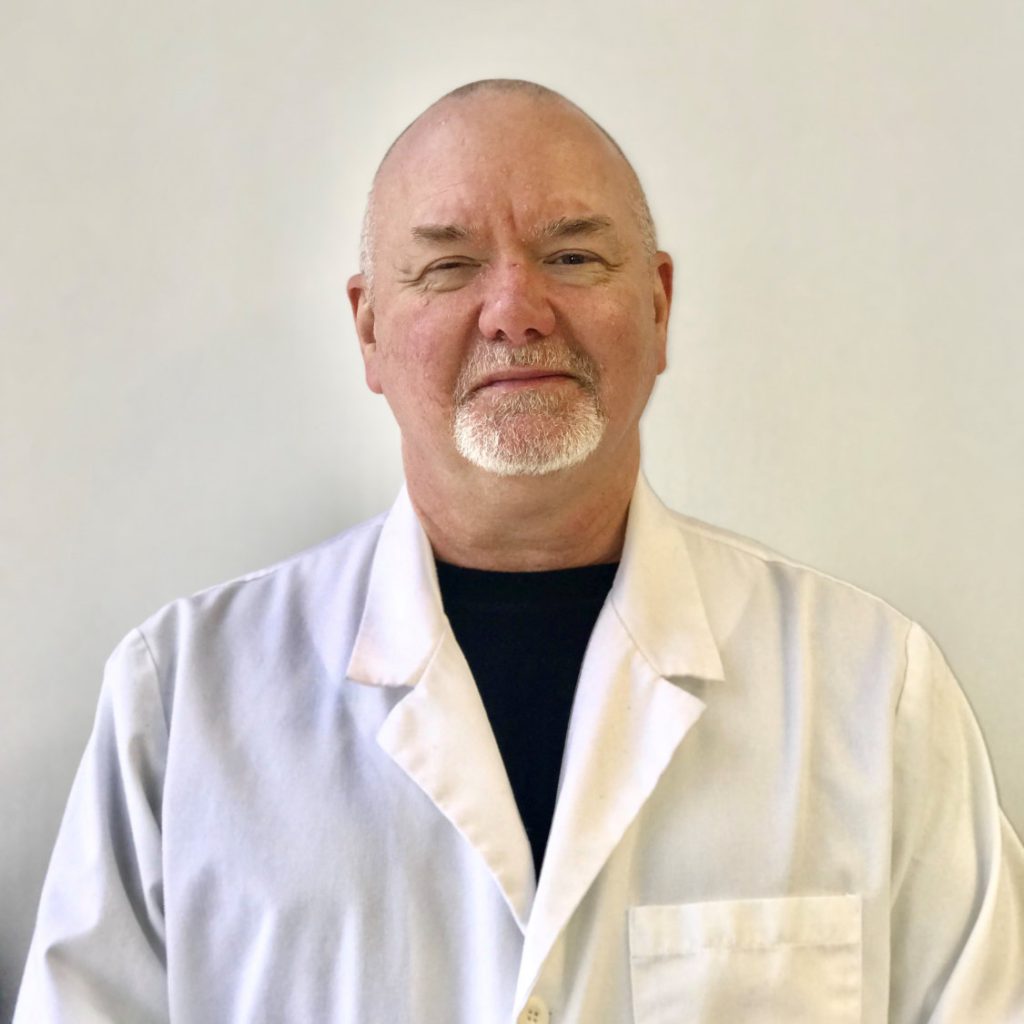
Robert Cecil, LAc - Robert has a passion for healing and a talent for orthopedic and neurological issues. He works with a lot of our veteran patients addressing a diverse range of conditions from chronic pain to neuropathy to PTSD. In addition, his experience with Frequency Specific Microcurrent and Estim scar release techniques provides additional healing modalities in addition to acupuncture.

Fielding Carroll, LAc - For those dealing with chronic digestive disorders such as Chrohns and IBS, Fielding has developed a unique approach combining personalized nutritional therapy with acupuncture to help people radically change their digestive health. Patients report relief from decades-long issues after only a handful of treatments. He is also skilled in Soliman’s Auricular Allergy Treatment (SAAT), offering significant allergy relief from conditions like Alpha-Gal.
Our newest member, Jason Macko, LAc is trained in the 5 element technique, offering a gentle and integrated approach to complex conditions. In addition, he will be part of our team offering SAAT for Alpha Gal and other allergies. He is passionate about helping athletes optimize their performance and recover quickly from injuries. He is also skilled at handling complex cases and helping people reach optimal health.
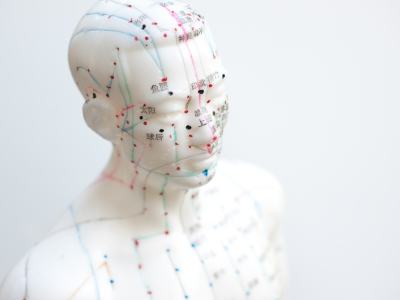
Together, we offer a wide range of expertise and services to address the mental and physical well-being of our patients. Considering acupuncture as part of your healthcare regimen can be a transformative step toward holistic wellness! By seeking the expertise of a skilled acupuncturist, you embark on a journey to balance and restore harmony within your body, mind, and spirit. Whether you're seeking relief from pain, stress reduction, chronic issues, or overall health improvement, acupuncture offers a gentle yet effective approach rooted in ancient wisdom.
Your path to optimal health starts with a visit to an acupuncturist—discover the profound healing potential of acupuncture today!
Yours in Health,
Jenny-Marie Greenough, LAc
It’s looking like Newvember with all the great changes we have coming!
Raja Wellness welcomes Fielding Carroll, LAc! Those of you coming in to see us for allergy treatments recently have probably already met Fielding. Fielding is a native Kentuckian and a classmate of mine from Acupuncture school. I am happy to welcome him aboard to our team! He’s been diligently learning the nuances of SAAT (our specialty acupuncture technique for alleviating allergies of all kinds that was pioneered by Dr. Soliman). In addition to his focus on mastering this new technique, he brings a wealth of experience in the treatment of digestive disorders and health coaching embracing food as the first medicine and foundation of better health! In addition to offering acupuncture services, personalized nutritional coaching is also available with Fielding.

Fall wellness is a frequent topic for us—as the days get shorter and colder, it’s important to fuel our immune systems with adequate rest, plenty of fresh fruits and veggies and to reduce junk foods from our diet. Our gut and immune systems are intimately intertwined and for some people, probiotic support may be helpful in addition to meditation, immune-supporting herbs, and preventative acupuncture care.
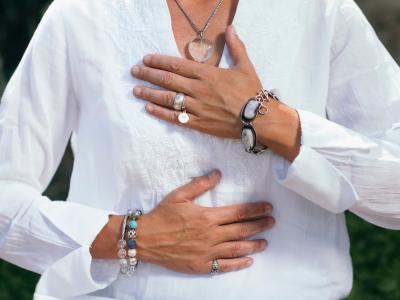
As we move forward toward 2024, we want to let our patients know our prices will be going up. We strive to offer a range of services at affordable prices and as part of that commitment, we are announcing this change early to give patients the option to “stock up” on treatments at our current price. All patients currently scheduled will pay the price at the time their service was booked. Current patients can pre-pay up to 5 visits each at our current rates, but those visits must be used before Mar 31, 2024. Our new prices will go into effect Dec 1, 2023 for all visits booked after that date.
In addition, you will see some new options in our services including nutrition coaching with Fielding, FSM-only treatments, BrainTap sessions & Glow sessions (combined light therapy & FSM for renewed skin). With those new options, we are also testing out some membership options, giving patients access to a select combination of treatments monthly at a reduced cost for members. Watch your emails for early access to these!
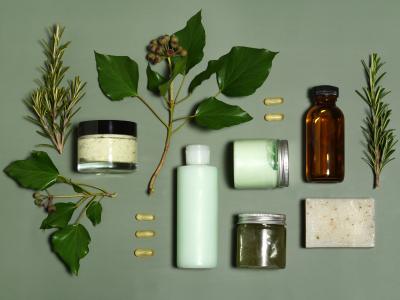
Our online store is also coming back soon with some changes!
At Raja Wellness, we continually strive to make your shopping experience as easy and affordable as possible.
CBD is legal in all 50 states, yet some banks and credit card processors impart their judgments on access to these legal products by refusing to process transactions involving the sales of CBD products of any kind. Their oversight unfortunately incorrectly flagged our blog about the health benefits of CBD for osteoporosis as a “product for sale” and our processor held our funds and thus forced us to stop using them as a processor. This has been a gray area for many years and is one of the reasons you see CBD in our offices but not in our online store. Unfortunately, the list of companies that allow this is very short. Please bear with us as we continue to search for a more fair, CBD-friendly payment processor that also allows us to offer you the best prices and convenience.
Early in my training as an acupuncturist, one of the hardest concepts to internalize was that in classical East Asia, the brain really had no role in the physiology of the body. Instead, many of the functions we now attribute to the brain were under the domain of other organs. Sometimes those functions were consistent with modern biomedical understanding, and other times they had more relation with the classical ideas of the Greeks. But as a whole, when applied as a system of treatment—the model worked and still works—surprisingly well. As time passes, modern research continues to validate these “arcane” ideas.
Despite the brain's lack of a defined role, a number of acupuncture points on the head have functions that are clearly neurological functions: controlling vision, improving mental clarity, balance and coordination, regulating digestion, speech, and so on. Early research in monkeys attempted to match the points on the head to the underlying active regions of the brain—and when only about 40% of those regions actually correlated, the assumption was the ancients may have deduced more about the brain than we gave them credit for in a few places, and in other areas, their locations were wildly different. Fast forward another 20 years and the same studies were repeated on humans. It turns out that humans and monkeys have different active areas for certain functions—and when they compared the points to actual human brain activity, more than 85% of the points now correlated to the active brain regions underneath them! Clearly, they knew more than we thought they did.
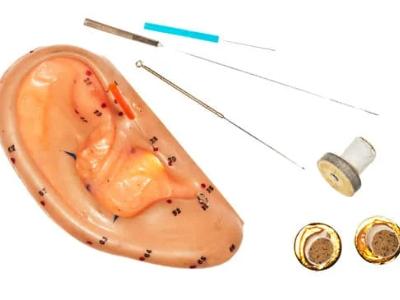
Today acupuncture is widely recognized for its role in improved neurological functioning—from post-stroke and concussion recovery to reducing the symptoms and rate of progression of diseases like MS, Alzheimer’s, dementia, and more recently as a way to regulate and correct dysautonomia regardless of cause. Modern iterations of acupuncture have evolved with specific systems of scalp acupuncture for neurological disorders and others focused on improving brain function. Auricular, or ear acupuncture evolved from some of these research efforts, recognizing the rich concentration of nerves in the ear and surrounding areas that have direct neurological pathways to the innermost reaches of the brain through the cranial nerves.
Besides acupuncture—what else can you do to protect what the Chinese once called “a curious organ” or “The Sea of Marrow”, your magnificent and adaptable brain? First and foremost— food matters! I highly recommend Dr. Gundry’s book “The Longevity Paradox” to learn more about what to eat, and as importantly, when to eat to promote optimal brain health.
In addition, there are a few supplements I recommend for nerve health and additional ones to be taken as soon as possible after any head trauma to help mitigate damage. Remember, if you take any prescription medications, please talk to your pharmacist or me before adding any supplements to your regimen. You can order through our website here:
AcuIntegra Glutathione Booster™ (Biotransformation, Detoxification & Antioxidation Support)
AcuIntegra HericinEx MCT™ (Memory, Neuro Support & Focus)
AcuIntegra Curcumin MCT™ (Inflammation Modulation, Anti-Oxidation Support, Detoxification Support)
Post-head Trauma Recovery Pack Fullscript regimen available here!
Millions of women suffer from gynecological complaints each year. Endometriosis (11% of women in the US) and fibroids (26% of women in the US) are two of the most common and painful issues women face. That’s over 30 million women in the US alone and these numbers are arguably under-reported as many less severe cases are often dismissed as PMS, depression, or part of some other syndrome. Conventional biomedicine has little to offer women in these cases beyond hormone therapies (often with intolerable side effects) or surgical options that can scar and affect future fertility, or as a last-ditch effort—simply offering a hysterectomy (often taking the ovaries as well) and throwing the woman into early menopause. Symptoms of these conditions can be painful and quite literally, draining, as women struggle with heavy, unrelenting bleeding.
These are not conditions new to women. Endometriosis was first identified 300 years ago in Western medical texts, but references to the condition trace back over 4000 years under the older diagnosis “hysteria”. Similarly, uterine fibroids have a long history. Uterine fibroid lesions were initially known as the “uterine stone.” In the second century AD, they were called scleromas. The term fibroid was first introduced in the 1860s. Uterine fibroids are the most common pelvic tumors among women of reproductive age, affecting more than 70% of women worldwide, particularly women of color”1. It is not surprising traditional medicines have ways to treat these conditions.
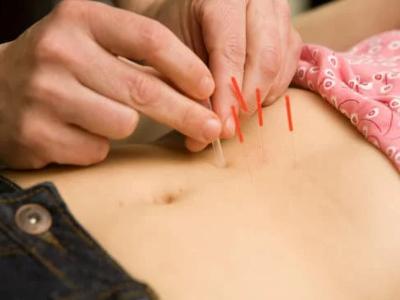
In my practice I have found acupuncture and herbs together provide the best treatment outcomes for these conditions, and if only one can be used, the herbs are the more important piece (although it takes longer for them to achieve the same results when used without acupuncture). Fortunately, I have been able to work with patients who not only were able to report their progress through improvement in their physical symptoms but also provided me with ultrasounds and other diagnostics from their OBGYNs.
In one case of a woman in her 40s—her uterine fibroids shrank on average more than 7mm each in a 3-month period, and after 6 months had no visible blood supply. She was no longer a candidate for surgery as her fibroids were effectively “cured”. 4 years later, even without maintenance herbs—her fibroids have not returned. Her heavy periods, severe abdominal pain and fatigue are a thing of the past.
In another case, a woman in her 20s came in for endometriosis and fibroids. Hormone therapies had failed and she was hoping to retain her uterus and chances to have children in the future but she was living with crippling pain that radiated from her abdomen to her back. She described it as “living with barbed wire wrapped around her torso and her spine—like I am being torn from the inside out”. In addition, she had fibroids and chronically heavy periods resulting in fatigue and anemia. To top it all off, she dealt with the emotional stress of the constant pain and fear of losing her chances at motherhood. Within 3 months of treatment, her periods were more normal and the pain was no longer constant but limited to around ovulation and onset of her menses. At 6 months, her cycles were normal and she was pain-free! She had follow-up imaging to evaluate her need for surgery and while endometrial tissue and fibroids were still present, the fibroids were visibly smaller and the endometrial tissue appeared less pervasive on imaging than it had 6 months before when she started treatment. At 9 months she was due for laparoscopic surgery to remove some of the endometrial tissue, and remarkably only 40% of the expected tissue was found and the fibroids were 70% smaller than on the initial imaging. The doctors were able to remove the excess endometrial tissue and fibroids easier than expected. 6 months later she was pregnant with her first child and now has a happy, healthy little girl, and her cycles continue to be normal.
Cases like these highlight why herbs and acupuncture have been used for thousands of years. Together they help women optimize their health safely and effectively. In combination with modern medical techniques, they can give even the most severe cases relief. I highlight the second case in particular because I don’t believe the herbs and acupuncture alone could have reduced the damage enough to help her get pregnant—perhaps if we had started the herbs years earlier before the progression was so severe. It’s important to work with all available resources for optimal health care. So please, if conventional treatments have failed or you want a more natural alternative—find an experienced acupuncturist and herbalist to work with!
Call us at 270-506-3853 or click here to book an appointment today!
1 Qiwei Yang, Michal Ciebiera, Maria Victoria Bariani, Mohamed Ali, Hoda Elkafas, Thomas G Boyer, Ayman Al-Hendy, Comprehensive Review of Uterine Fibroids: Developmental Origin, Pathogenesis, and Treatment, Endocrine Reviews, Volume 43, Issue 4, August 2022, Pages 678–719, https://doi.org/10.1210/endrev/bnab039
In honor of Black History Month, I wanted to share some of the stories of how acupuncture came to be a legitimate practice in the US largely through the activism of some unlikely proponents—the Black Panthers and the Young Lords. Our medical history is full of examples of people of color being exploited by the medical industry, of people suffering in experiments because it was assumed their skin color prevented them from “really feeling pain” and other abominations that continue in less obvious ways to impact access to effective and safe health care for people of color. It took radical, focused, and illegal actions to improve access to health care for people of color in New York, and the Lincoln Detox Center still stands as an inspiring story of community activism for positive change. The model of the Lincoln Detox Center for treating addiction still stands as the gold standard for effective treatment.
In the 1970s acupuncture went from something in the back alleys of Chinatowns across the US to a vital element in community clinics founded and run by leaders in the Civil Rights community and became a subject of national interest after Henry Kissinger’s seminal trip to China, where doctors demonstrated acupuncture anesthesia during surgery. In 1974, California became the first state to openly license acupuncture after public outcry following the arrest of Dr. Miriam Lee. If it hadn’t been for the very public use of acupuncture in these community clinics and building awareness of the efficacy of acupuncture, I doubt the public outcry would have been very loud, and acupuncture might still be unregulated (as it is in a handful of states including Alabama, Oklahoma, and South Dakota). Thanks to these pioneering efforts, acupuncture has become recognized as a primary treatment option for pain, addiction, anxiety, and more.
Of note, at that time in China, acupuncture was part of an outreach to provide basic health care to the poor, rural regions of the country as part of the Barefoot Doctors. Elements of the traditional practices of acupuncture had been simplified into a standardized practice by Chinese physicians called “Traditional Chinese Medicine”, which is the foundation of most acupuncture training here in the US. One doctor who was on one of these trips to China, Tolbert Small, MD observed the acupuncture demonstration and asked for treatment for himself. He was intrigued enough to ask for more information. He was able to record 4 hours of lecture on the use of acupuncture and estim (electrical stimulation), procure some needles and an estim machine, and proceeded to practice on himself and his family after his return from China. Back in Oakland, he obtained an English translation of a Chinese Medicine text to study and expand his understanding of acupuncture.
He then incorporated acupuncture, mostly electro-acupuncture, into his practice in his community clinic and pioneered the use of acupuncture for the treatment of the symptoms of sickle-cell anemia. Dr. Small primarily used acupuncture to treat various kinds of pain. He was also pivotal in bringing national awareness to the plight of people with sickle-cell anemia and garnering more funding for testing and research of treatment. He even used acupuncture to ease his wife’s labor pains during two of her deliveries and may have been the first MD to do so in the US. To learn more about Dr. Small, I recommend this interview.
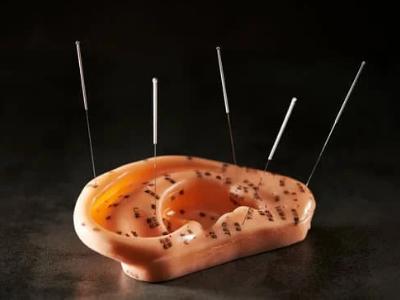
On the other side of the country in the South Bronx, Matulu Shakur (stepfather of Tupac Shakur) was one of the providers in the Lincoln Detox Center who heard about acupuncture for the treatment of addiction in Hong Kong in a New York Times article, and took an interest. He went to Chinatown to purchase acupuncture kits and books from doctors, then went to Montreal for training. There he studied how to treat addiction with acupuncture and later traveled to China, Switzerland, and other countries where acupuncture was used more openly. He was later licensed in California as an acupuncturist and founded an acupuncture school in the Bronx. His work along with those like Michael O. Smith, MD, DAc, lead to the development of the NADA protocol—a simple 5-point ear acupuncture protocol that is now used throughout the country for the treatment of addiction.
The Lincoln Detox Center was also notable for the development of the first patient bill of rights—changing the relationship between doctor and patient to protect patient rights and give them a voice in their care. Cleo Silvers, while not an acupuncturist, was a community organizer and advocate who was instrumental in authoring the patient bill of rights to ensure patients had access to quality care, their medical records, and the right to not be experimented on without their knowledge or consent—things that were grossly lacking especially among patients of color that we now take for granted.
Another key leader in the Lincoln Detox story was Richard Taft, MD; who was likely murdered during his tenure, though his death was staged to look like a suicide. He was working to publicize the dangers of methadone and promote acupuncture and other treatments for true detox at the time of his death. Today acupuncture continues to provide a safe alternative to methadone in the treatment of addiction, while at the same time continuing to be underutilized in many treatment centers and not readily accessible for the people who most need it. It is my hope that as awareness grows, access to acupuncture becomes a standard practice for addiction for all people.
Evil Bone Water (EBW) is one of our best sellers in the clinic for many very good reasons!
According to the classical name, Zheng Gu Shui, (Zhèng Gǔ Shuǐ; 正骨水) the formula is called “Mend the Bones Water”, highlighting its use for soothing pain and speeding the healing of fractured and bruised bones. But wait…
There’s more:
I have all of these!!! Can I bathe in it?
Is it just for humans?
It sounds great! What’s the downside?
Ok, so it’s not quite 101 ways, but Evil Bone Water is a wonderfully useful topical to have in your first aid kit. I keep a bottle in every car, at the barn, in my husband's shop (he’s a mechanic) and the patient feedback has been overwhelmingly positive! Several buy it by the case to share with their friends and family! So on the “List of things I wouldn’t want to be on a deserted island without”, this one is definitely in the top 5!
Evil Bone Water is available for purchase in our clinic, and online here!
Have an Evil Bone Water success story? We’d love to hear about it!
Football Season is underway and did you know many top players keep themselves at peak performance with acupuncture?
This recent article quotes one of my instructors, Matt Callison, LAc—an internationally recognized expert in acupuncture & cupping for sports medicine, on the benefits of acupuncture and cupping not just for injury recovery, but for prevention as well. His style of acupuncture is heavily influenced by a deep understanding of trigger points and muscle physiology.
I attempted to produce a complete list of teams who use acupuncture, but after talking to some of the acupuncturists who work with these elite athletes, many consider acupuncture to be their “secret weapon” and don’t advertise who they work with for fear of another team or player “luring” them away!
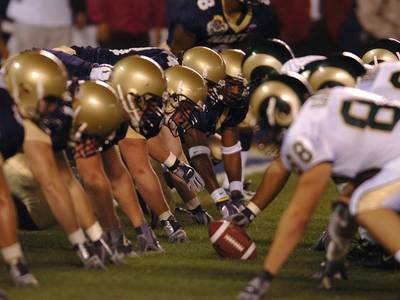
One of these fabulous acupuncturists is Lisa Ripi who manages a grueling schedule to care for players on 4 different teams! She uses Japanese-style acupuncture which is similar to what I was trained in. Dan Domingues, LAc is another one of those gems—he shares his role as the team acupuncturist for the Buffalo Bills.
Cupping is often a big part of these treatments—even National Geographic took notice in 2018 when James Harrison (then with the New England Patriots) shared his use of cupping and acupuncture. So odds are, your favorite teams probably have acupuncture and cupping in their arsenal as tools to recover quickly and be ready for the next game!
Did you know our own Robert Cecil, LAc has extensive training in Master Tung points (great for recovery from injury), and cupping (fabulous for both recovery from muscle strain and other injuries)? In fact, just one session of cupping can increase the range of motion of the treated muscle groups in athletes—and alongside other techniques, can greatly reduce recovery time after an injury.
Acupuncture and cupping in combination with Frequency Specific Microcurrent treatments can target specific types of injured tissue to speed healing. So, regardless of if you are out on the field or cheering on your favorite players—remember we can help improve your performance!
Follow Raja Wellness on Facebook and Instagram!
Follow Raja Goods on Instagram!
A frequent question we get in the clinic is “Can you get me off my diabetes medicine?" The simple answer is “no”. Acupuncture and herbs alone are potent allies in healing, but especially with diabetes, the choices you make each day have far more impact than anything anyone can give you. The more complete answer is “it depends”:
It is also important to know that we cannot make changes to prescription medications, so it’s important to work with your doctor as well as your acupuncturist when you decide that you are ready to make the changes you need for better health.
So why try acupuncture and TCM for diabetes?
Acupuncture and herbal medicine are not a “one-size fits all” treatment approach—each patient is unique and we chose our specific formulas and acupuncture points for each patient based on the presentation of the entire patient; not just a set cookie-cutter treatment. As a result, not only do we see the diabetes symptoms improve, the patient experiences better health overall. By choosing the right approach for each patient we avoid the spiral of “take this medication for this, and this medication for that, and this medication for the side effects of the first medication and yet another medication for the side effects of the second medication….” that so many patients experience.
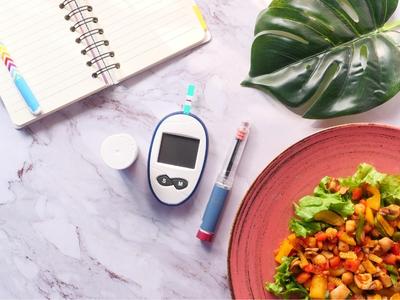
Now as to the pesky diet and exercise thing:
If you continue to overload your body with too much of the wrong foods and not enough of the right exercise—even the best treatments and formulas, plus the medications your doctor prescribes—won’t be enough to keep the disease from progressing!
I highly recommend anyone who has diabetes or even a risk factor for diabetes (which is pretty much everyone) read “Why We Get Sick” by B. Bikman. It’s a great book based on solid research that helps you understand what happens with diabetes and more importantly, what you can do to change it. If you need help getting off the sugar, we have amazing and compassionate coaching and nutrition partners who can help you!
Follow Raja Wellness on Facebook and Instagram!
Follow Raja Goods on Instagram!
Sources:
1 Wang KX, Liang FX, Chen S, Luo ZH, Chen B, Chen ZQ, Zhang YL, Chen J, Gu XL, Zhou T, Yan P, Xu XY. Effect of electroacupuncture of "Biao-Ben" acupoints on renal function and hemorheology and eNOS level in patients with early diabetic nephropathy. Zhen Ci Yan Jiu. 2022 Jan 25;47(1):46-52. Chinese. doi: 10.13702/j.1000-0607.20210036. PMID: 35128870.
2 Wang H, Chen X, Chen C, Pan T, Li M, Yao L, Li X, Lu Q, Wang H, Wang Z. Electroacupuncture at Lower He-Sea and Front-Mu Acupoints Ameliorates Insulin Resistance in Type 2 Diabetes Mellitus by Regulating the Intestinal Flora and Gut Barrier. Diabetes Metab Syndr Obes. 2022 Jul 30;15:2265-2276. doi: 10.2147/DMSO.S374843. PMID: 35936053; PMCID: PMC9348137.
3 Dimitrova A, Murchison C, Oken B. Acupuncture for the Treatment of Peripheral Neuropathy: A Systematic Review and Meta-Analysis. J Altern Complement Med. 2017 Mar;23(3):164-179. doi: 10.1089/acm.2016.0155. Epub 2017 Jan 23. PMID: 28112552; PMCID: PMC5359694.
We are excited to announce our Tai Chi Classes are back!!! These classes will be taught by Grand Master Mingye Ding and Jenny-Marie Greenough, LAc.
Why Tai Chi? Tai Chi is a practice rooted in martial arts that teaches balance, relaxation, and mindfulness. Numerous studies have shown the health benefits of Tai Chi. In fact, Harvard Medical School wrote an entire book on the subject detailing the research findings and benefits of a regular tai chi practice. The only other practice that has been shown to slow signs of physical and mental aging, reduce the risk of falling, and increase general wellness as much is dancing! That’s right—not running, not golf, not swimming or cycling or weights…dance and Tai Chi are two of the best things you can do for your long-term health. And in many ways, Tai Chi is a dance—challenging us to be more fluid, rhythmic, and powerful in our movements.
Most studies on Tai Chi have been done using Yang-style Tai Chi, the most commonly practiced here in the US, but the benefits transcend the various Tai Chi forms. Grand Master Ding can teach Yang-style, but he is world famous for his mastery of Chen-style Tai Chi—in fact, he was featured on a stamp in China for his contribution to martial arts! Chen-style adds a dynamic of hip movements and alternating very slow movements with faster movements throughout the forms. There are several other styles of tai chi he may bring into our class as well as basic tai chi warm-up movements that are different from the typical “gym” warm-ups most of us are familiar with. Some days, we may practice a more healing-focused form of Tai Chi called Qigong as part of our warm-up for the form.
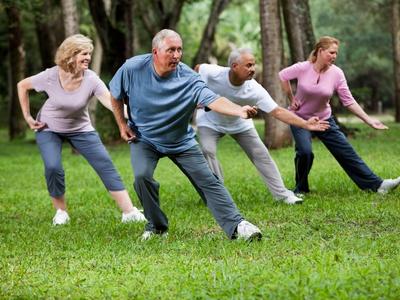
These forms can be adapted to all levels of ability—from seated-forms to gentle standing to dynamic and physically challenging, that will give even the most agile of athletes something to improve on! Each of the basic forms have associated sword forms, fan forms, and various ways to take the practice to new levels of understanding!
That is the beauty of Tai Chi—no matter where you start, there is a place to begin and a goal to pursue! I was so proud when I learned my first version of the Chen forms, so imagine my shock when Master Ding said “Good job, now we begin again!”; and we did, from the very first step, with a more nuanced exploration of each movement. Over the years we have begun again and again with the form—each time there is something to learn and I can’t wait to share this with all of you!
Follow Raja Wellness on Facebook and Instagram!
Follow Raja Goods on Instagram!